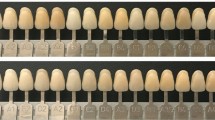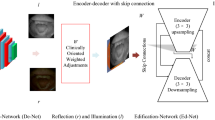Key Points
-
Portrait photography should aim to capture the patient in a relaxed state of mind.
-
The set-up for portraiture can utilise natural daylight, compact or studio flashes.
-
Laboratory or bench images of plaster casts and prostheses are easily photographed with studio or compact flashes and a variety of coloured backgrounds.
-
The best approach to achieving unique and interesting pictures is trial and error. Experimentation is the key to creativity.
Abstract
This part of our series specifically addresses extra-oral dental photography consisting of portraiture and dental laboratory pictures. Portraiture, which is achieved using three types of illumination, natural daylight, bi-lateral camera mounted flashes (as for intra-oral images) or studio flashes, can be further divided into full face and dento-facial compositions. These are necessary for various dental disciples including evaluation of aesthetics, orthodontics and oral surgery facial profile assessment. Dental laboratory photography includes documentation of plaster casts and indirect prostheses.
Similar content being viewed by others
Log in or create a free account to read this content
Gain free access to this article, as well as selected content from this journal and more on nature.com
or
References
Ahmed I. Digital dental photography. Part 6: Camera settings. Br Dent J 2009; 207: 63–69.
Author information
Authors and Affiliations
Corresponding author
Additional information
Refereed paper
Rights and permissions
About this article
Cite this article
Ahmad, I. Digital dental photography. Part 7: extra-oral set-ups. Br Dent J 207, 103–110 (2009). https://doi.org/10.1038/sj.bdj.2009.667
Accepted:
Published:
Issue date:
DOI: https://doi.org/10.1038/sj.bdj.2009.667
This article is cited by
-
Colour fidelity: the camera never lies - or does it?
British Dental Journal (2020)



